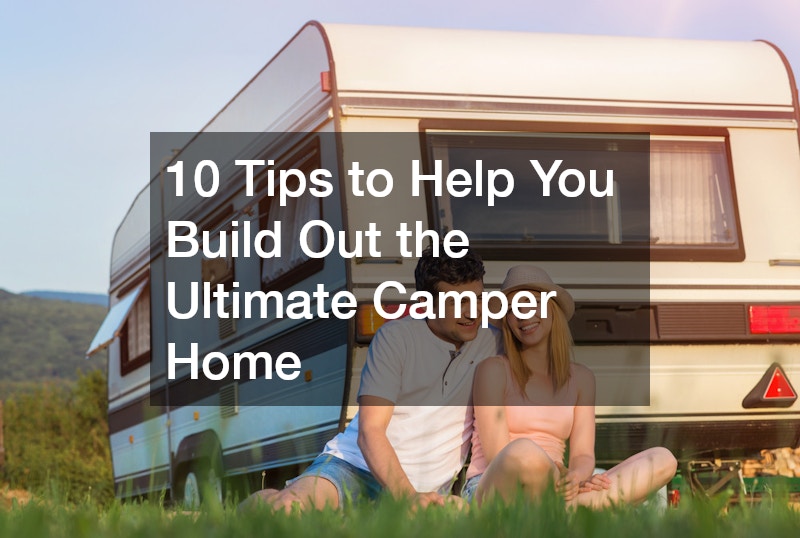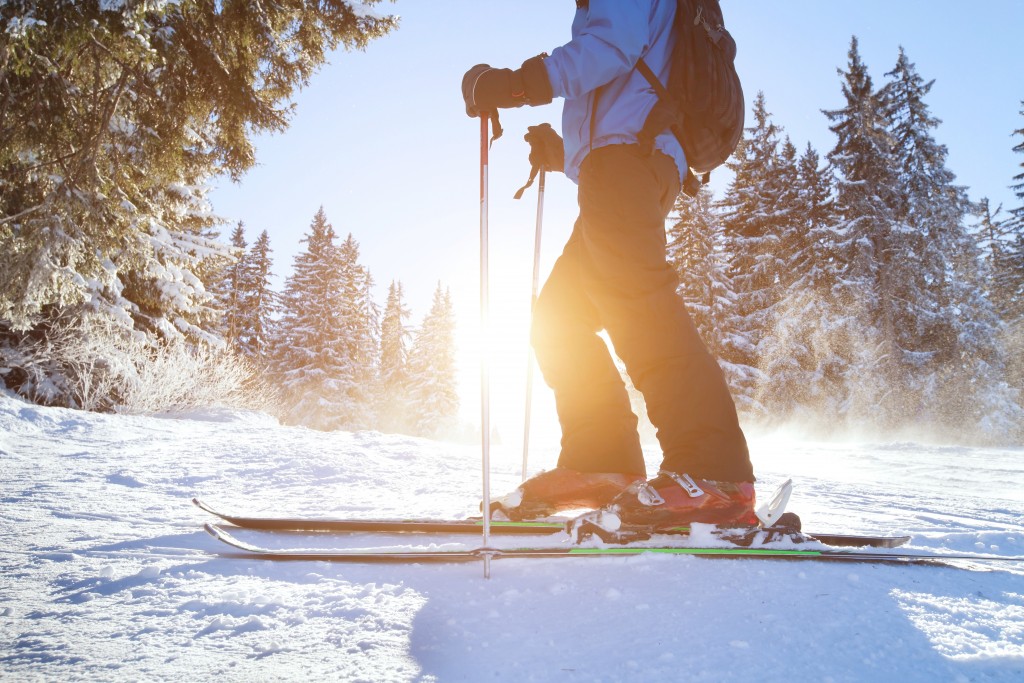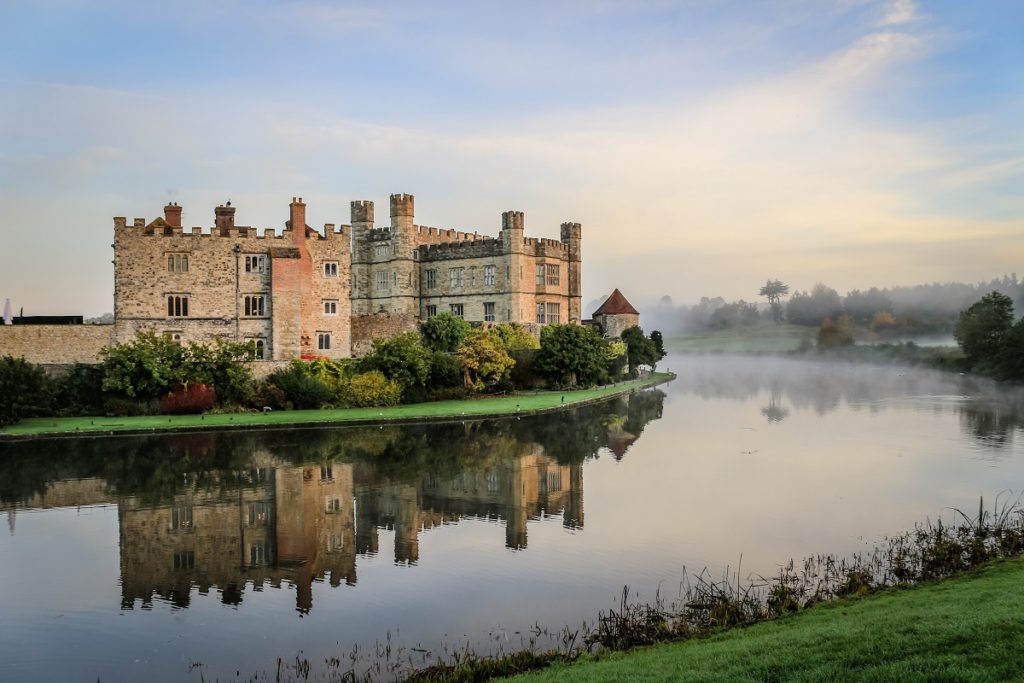Transforming your camper into a fully-functional and personalized home on wheels is a dream for many travel enthusiasts. Whether you’re gearing up for long-term adventures, a weekend getaway, or even an extended stay at a long term RV park, creating the ultimate camper home is both an art and a science. It’s about blending practicality with your unique style to create a space that suits your needs and reflects your personality. In this comprehensive guide, we’ll explore 10 key areas to help you design a camper that combines comfort, functionality, and style, ensuring your home on wheels is ready for any adventure—whether it’s off-grid exploration or a cozy retreat under the stars.
Building the ultimate camper starts with understanding your lifestyle and travel goals. Are you planning to go off-grid often, or will you rely on amenities at campgrounds? Do you need space for family members or pets? With thoughtful planning, even a modest camper can be transformed into a dream home on wheels.
- 1. What are the essential features of an ultimate camper?
- 2. How to maximize storage in your camper?
- 3. What materials are best for camper interiors?
- 4. How can you ensure power efficiency in your camper?
- 5. What are the best ways to maintain temperature control?
- 6. Is it possible to incorporate a bathroom in a camper?
- 7. How to set up a functional kitchen in your camper?
- 8. What safety features should be considered?
- 9. How can you personalize your camper style?
- 10. What budget considerations should be made?
1. What are the essential features of an ultimate camper?
1.1 Spatial Layout Optimization
The layout is the foundation of any camper conversion. Prioritize efficiency by mapping out clear zones for sleeping, cooking, lounging, and storage. A well-organized layout prevents overcrowding and ensures each area serves its purpose.
To maximize mobility, leave enough open floor space for walking and rearranging as needed. If space is tight, consider slide-outs or expandable areas that provide additional room when parked.
1.2 Essential Appliances and Utilities
Key utilities like a reliable generator and compact appliances such as a mini-fridge or microwave can make a big difference in your camper’s functionality. For an off-grid camper, appliances powered by propane or solar energy are excellent choices.
Other essentials include a water heater, an efficient cooling system, and a robust power source. Having a backup power system, like a generator or additional batteries, can save you in emergencies.
1.3 Comfort and Aesthetic Design
Designing for comfort doesn’t have to compromise aesthetics. Incorporate cozy features like blackout blinds, plush bedding, and ergonomic seating. A mix of textures and colors can make your camper feel more like home.
Consider adding decorative throw pillows, warm lighting, and stylish rugs. These small details create a welcoming environment, making your camper an enjoyable retreat no matter where you park.
2. How to maximize storage in your camper?
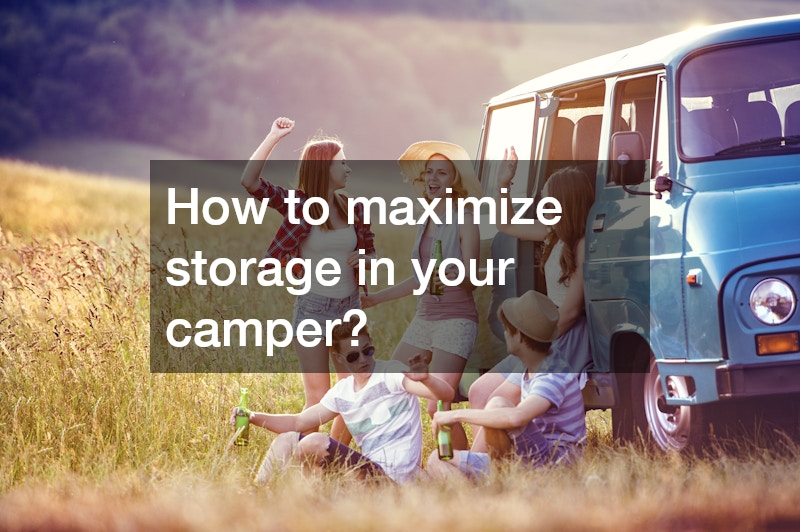
2.1 Utilizing Under-seat and Overhead Spaces
In a camper, every square inch counts. Utilize under-seat storage for larger items like extra blankets, tools, or outdoor gear. Overhead cabinets are ideal for lighter items such as books, clothes, or kitchenware. Maximize vertical space by adding hanging organizers or magnetic strips for utensils. Pegboards can also be a great addition for tools or kitchen essentials.
2.2 Multi-purpose Furniture
Furniture that doubles as storage, such as benches with hidden compartments or a fold-out bed with drawers, can help minimize clutter. For instance, a convertible sofa-bed can serve as seating by day and a bed at night, with storage underneath.
A foldable table can act as a workspace, dining area, or even extra prep space in the kitchen.
2.3 Collapsible and Storable Equipment
From folding chairs to collapsible kitchenware, storable equipment saves space when not in use. Items like nesting bowls, collapsible water containers, and foldable ladders are lightweight and convenient for small spaces. Additionally, compact camping gear such as foldable tables, stackable storage bins, and collapsible dish racks can make organizing your camper even easier. These items not only free up valuable storage space but also reduce the overall weight of your camper, improving fuel efficiency and ease of towing. Prioritizing multi-functional and collapsible designs ensures that your camper remains clutter-free while still being equipped for any adventure.
3. What materials are best for camper interiors?
3.1 Durable Flooring Options
Opt for waterproof vinyl flooring or laminate. These materials are not only lightweight and affordable but also resistant to wear and tear, ideal for the rugged lifestyle of a camper.
Vinyl flooring, in particular, is easy to clean, making it perfect for campers who enjoy outdoor adventures.
3.2 Lightweight Wall and Ceiling Materials
Lightweight plywood or composite panels are great for walls and ceilings. They’re easy to work with and can be painted or finished to match your design aesthetic.
To add insulation and reduce heat loss, consider cork paneling or foam-core boards. These materials also help dampen sound for a quieter interior.
3.3 Eco-friendly and Sustainable Choices
Sustainability is a growing trend in camper design. Bamboo countertops and recycled materials can add eco-friendly appeal to your space without compromising durability. Additionally, using non-toxic paints and finishes can make your camper healthier for you and the environment.
4. How can you ensure power efficiency in your camper?
4.1 Solar Panel Installation
Installing solar panels is one of the most effective ways to power your camper off-grid. Solar systems are scalable, so you can start small and add more panels as needed. Pair these panels with a battery bank to store energy for night use. Professional installation at auto body shops or DIY kits makes this an accessible option for many camper owners.
4.2 Efficient Battery Management
A high-quality battery management system ensures your camper’s energy needs are met without overloading the system. Lithium-ion batteries are a popular choice for their efficiency and long lifespan.
Consider investing in a smart charger to optimize battery performance and prolong its life.
4.3 LED Lighting and Energy-saving Appliances
Switch to LED lights and energy-efficient appliances to reduce power consumption. These upgrades are not only eco-friendly but also essential for off-grid living. Energy Star-rated appliances are great for minimizing power use while maintaining performance.
5. What are the best ways to maintain temperature control?

5.1 Effective Insulation Techniques
Proper insulation keeps your camper comfortable in all seasons. Use spray foam or insulation panels to cover walls, floors, and ceilings, and seal any gaps to prevent drafts. Insulated window coverings can further reduce heat loss in winter or block heat in summer.
Don’t forget the flooring—adding a layer of insulated matting can make a significant difference.
5.2 Ventilation and Air Circulation Solutions
Install roof vents and fans to promote air circulation and reduce humidity. For added comfort, consider window tint to keep your camper cool in hot weather by blocking out UV rays.
Cross-ventilation is another key strategy. Position windows and vents to allow fresh air to flow naturally through the camper.
5.3 Heating and Cooling Options
A portable heater and a compact AC unit are essential for extreme climates, providing quick and efficient temperature control. Alternatively, consider a wood stove or diesel heater for colder regions; both options offer reliable warmth, with wood stoves adding a rustic, cozy feel to your camper. For cooling, swamp coolers or evaporative cooling fans are energy-efficient options that work particularly well in dry climates. Additionally, portable fans, reflective window coverings, and insulated curtains can help regulate temperatures without using excessive energy. Combining these solutions ensures your camper remains comfortable, no matter the weather conditions you encounter on your journey.
6. Is it possible to incorporate a bathroom in a camper?
6.1 Compact Bathroom Fixtures
Yes, it’s possible! Use compact fixtures like a corner shower, foldable sink, or cassette toilet. Space-saving designs ensure you can incorporate a bathroom without sacrificing too much living area.
Consider a wet bath design, where the shower and toilet share the same space, to save room.
6.2 Water Saving Techniques
A water filtration system is critical for campers relying on natural water sources. Low-flow showerheads and faucets can also reduce water usage significantly. Portable water tanks with pumps make managing water usage easier.
6.3 Waste Management Systems
Install a septic tank or composting toilet for hassle-free waste management. Composting toilets are eco-friendly and eliminate the need for black water tanks, making them perfect for extended off-grid living. These systems are low-maintenance and significantly reduce water usage compared to traditional options. For those frequently traveling to remote areas, a portable gray water tank paired with a small septic system offers additional flexibility. Properly managing waste not only ensures a cleaner and more sustainable camping experience but also minimizes your environmental footprint, making your camper more self-sufficient and better equipped for long-term travel.
7. How to set up a functional kitchen in your camper?
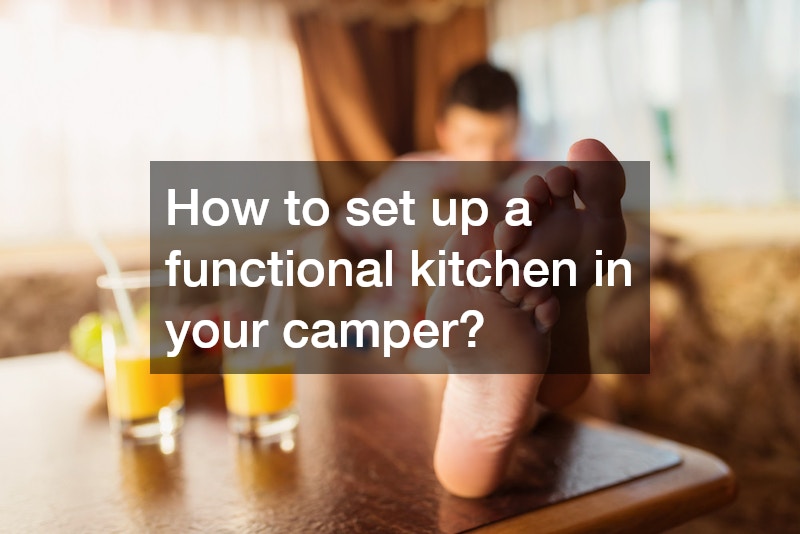
7.1 Space-saving Kitchen Appliances
Compact appliances like a two-burner stove, mini-fridge, and toaster oven can fit neatly into a camper kitchen. Look for appliances with dual functionalities, such as a microwave with a convection option.
7.2 Food Storage Solutions
Pull-out pantries, under-sink storage, and stackable containers for storing food and kitchen essentials can maximize storage while keeping items organized. Vacuum-sealed bags are also great for storing perishables.
7.3 Cooking and Cleaning Efficiency
A folding countertop or slide-out cutting board adds prep space without taking up room. Use a small, energy-efficient water heater for cleaning, and invest in durable yet lightweight cookware. Non-stick pans and collapsible colanders are great space-savers.
8. What safety features should be considered?
8.1 Smoke and Carbon Monoxide Detectors
Safety should be a priority in any camper. Install detectors to alert you of smoke or harmful gas emissions, especially if you’re using a propane stove or generator. Test these devices regularly.
8.2 Security Locks and Systems
A reliable locking system for doors and windows adds peace of mind. Modern campers often include smart locks or motion-sensor alarms for enhanced security. A security camera or GPS tracker can also help keep your camper safe.
8.3 Fire Extinguishers and First Aid Kits
Ensure your camper is equipped with a fire extinguisher and a well-stocked first aid kit. These items are essential for emergencies and could be lifesaving.
9. How can you personalize your camper style?

9.1 Choosing a Color Palette
A cohesive color scheme can make your camper feel more spacious and inviting. Light, neutral tones work best for small spaces, while pops of color can add personality. Pair earthy tones with wooden finishes for a cozy vibe.
9.2 Decorative Accents and Art
Incorporate small decorative items like framed photos, wall decals, or unique hardware on cabinets. These touches make your camper uniquely yours. Small hanging plants or macrame can add a natural element.
9.3 Customizing Fabrics and Upholstery
Choose durable yet stylish fabrics for curtains, seat cushions, and bedding. Opt for easy-to-clean materials if you’re traveling with pets or kids. Upholstered headboards or slipcovers can add a touch of luxury to your camper.
10. What budget considerations should be made?
10.1 Estimating Overall Costs
Determine your budget before starting your build-out. Account for major expenses like used trailers, appliances, and labor if hiring professionals. Research prices for both materials and labor to avoid surprises.
10.2 Prioritizing Necessary Upgrades
Focus on must-have features like insulation, power systems, and essential appliances first. Luxury upgrades, like advanced tech or designer decor, can be added later.
10.3 DIY Versus Professional Help
DIY can save money but requires time and skill. For complex installations like solar panels or towing service hookups, hiring a professional ensures safety and reliability.
Building the ultimate camper home combines creativity, practicality, and a touch of personal style. From optimizing your layout to ensuring efficient power use and adding cozy design elements, each step contributes to a home on wheels that’s ready for any journey. Whether you’re staying at a long-term RV park, exploring remote trails, or renting trucks for rent to tow your camper, these tips will help you craft a space that’s both functional and uniquely yours.
Remember, the beauty of creating your ultimate camper lies in its adaptability. It’s your personal haven, designed to reflect your lifestyle and priorities. Whether it’s upgrading with eco-friendly materials, installing reliable safety systems, or adding personal touches like customized blinds, every choice brings you closer to a camper that feels like home. Embrace the freedom of the open road, knowing that your camper is a secure, comfortable, and stylish base for endless adventures. With thoughtful planning and execution, your camper can truly become a sanctuary that enhances your journey.

